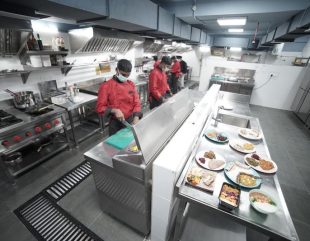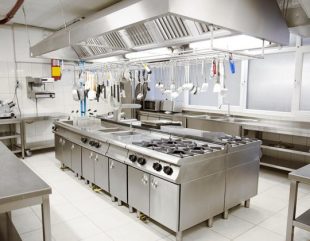In today’s quick-moving world, the demand for helpful and productive food delivery services keeps on rising. To satisfy this need, another idea known as Dark Kitchen has arisen, reforming how food is prepared and conveyed to customers. These virtual kitchens work without customary feasting spaces, focusing exclusively on planning nourishment for delivery orders.
The Rise of Dark Kitchens:
Virtual kitchens, or cloud kitchens, have acquired prominence as of late because of the rising demand for food delivery services. Dissimilar to conventional eateries, the kitchens work solely for delivery orders, with no eat-in-choice accessible.
Location and accessibility:
One of the secrets of these kitchens lies in their essential location and accessibility. These kitchens are often arranged in modern regions or business spaces with low leases and more than adequate area, permitting operators to amplify productivity and limit above-average costs. By picking locations that are effectively open to delivery drivers and concentrated on target customer socioeconomics, it can satisfy orders rapidly and productively, guaranteeing brief delivery to customers’ doorsteps.
Specialization and Innovation:
These kitchens have the adaptability to spend significant time on unambiguous cooking styles or food ideas, taking care of assorted preferences and inclinations. Operators can send off different virtual brands from a similar kitchen space, offering various choices to customers without the imperatives of a customary café menu. This innovation permits kitchens to remain in front of patterns and adjust to changing purchaser inclinations, constantly presenting previously unheard-of food offerings to the market.

Technology and Automation:
Technology assumes an essential role in the activity of kitchens, empowering operators to smooth out processes and upgrade productivity. High-level kitchen board software permits operators to follow orders, oversee inventory, and monitor kitchen performance continuously. Automated cooking hardware and sequential construction systems further upgrade efficiency, lessening standby times and guaranteeing predictable quality across orders. By utilizing technology and automation, it can fulfill the needs of a high-volume delivery activity while keeping up with food quality and customer fulfillment.
Customer Experience and Feedback:
Regardless of working without customary dining spaces, Dark Kitchen focuses on the customer experience and depends on feedback to drive improvement. Web-based requesting platforms and versatile applications give customers a consistent requesting experience, permitting them to peruse menus, place requests, and track delivery status easily. Operators effectively request feedback from customers to distinguish regions for development and refine their offerings. By paying attention to customer feedback and ceaselessly emphasizing their menu offerings and administration processes, they can convey remarkable experiences that make customers want more and more.
These kitchens are reshaping the food delivery industry by offering a helpful, productive, and imaginative answer to satisfy the needs of current customers. With vital location and accessibility, specialization and innovation, technology and automation, and an emphasis on customer experience and feedback, kitchens are unveiling the secrets to outcome in the serious universe of food delivery. As the notoriety of food delivery keeps on taking off, dark kitchens are ready to assume a critical role in molding the eventual fate of feasting experiences all over the planet.



